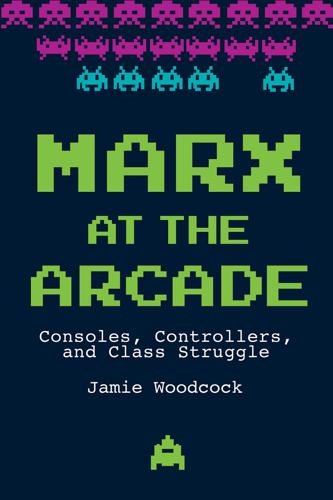
Marx at the Arcade: Consoles, Controllers, and Class Struggle
by
Jamie Woodcock
Published 17 Jun 2019
11Keith Plocek, “Most Popular Marxist Board Game,” Mental Floss, August 12, 2014, http://mentalfloss.com/article/58318/story-class-struggle-americas-most-popular-marxist-board-game. 12Quoted in Plocek, “Most Popular Marxist Board Game.” 13Molleindustria, “Phone Story,” Phone Story, 2011, www.phonestory.org. 14Stuart Dredge, “Apple Bans Satirical iPhone Game Phone Story from Its App Store,” Guardian, September 14, 2011, www.theguardian.com/technology/appsblog/2011/sep/14/apple-phone-story-rejection. 15Molleindustria, “Phone Story.” 16Dredge, “Apple Bans Satirical iPhone Game.” 17Molleindustria, “To Build a Better Mousetrap,” 2014, http://www.molleindustria.org/to-build-a-better-mousetrap. 18Joseph Bernstein, “The New Marxism Comes to Computer Games,” BuzzFeed, May 5, 2014, www.buzzfeed.com/josephbernstein/the-new-marxism-comes-to-computer-games. 19David Leblanc, “Working at Play: Alienation, Refusal, and Every Day the Same Dream,” First Person Scholar, December 14, 2016, www.firstpersonscholar.com/working-at-play. 20Quoted in Leblanc, “Working at Play.” 21Leblanc, “Working at Play.” 22John Walker, “Wot I Think: Papers, Please,” Rock Paper Shotgun, August 12, 2013, www.rockpapershotgun.com/2013/08/12/wot-i-think-papers-please. 23Walker, “Wot I Think: Papers, Please.” 24Keith Stuart, “War Games – Developers Find New Ways to Explore Military Conflict,” Guardian, July 15, 2014, www.theguardian.com/technology/2014/jul/15/war-games-developers-military-conflict. 25Marijam Didžgalvytė, “The Uber Game Shows the Latent Power of Political Video Games,” Kotaku, February 8, 2018, www.kotaku.co.uk/2018/02/08/the-uber-game-shows-the-latent-power-of-political-video-games. 26Didžgalvytė, “The Uber Game Shows the Latent Power.” 27Marijam Didžgalvytė, “‘Corbyn Run’ Highlights the Stakes of This Week’s British Election,” Waypoint, June 6, 2017, https://waypoint.vice.com/en_us/article/a3zvpp/corbyn-run-highlights-the-stakes-of-this-weeks-british-election. 28Quoted in Didžgalvytė, “‘Corbyn Run’ Highlights the Stakes.” 29Didžgalvytė, “‘Corbyn Run’ Highlights the Stakes.” 30Didžgalvytė, “The Uber Game Shows the Latent Power.” 31The Supergamers, directed by Chris Boulding, London: BBC, 2016. 32Mark R.
…
Molleindustria may not have reached its goal of raising enough to fund organizations fighting in the resistance, but the money did benefit someone within the brutal phone supply chain. There are a range of other games released by Molleindustria that take different experimental angles on politicizing videogames. To Build a Better Mousetrap is a “management” videogame in which the player runs a “semi-abstract” mousetrap factory, employing and choosing how much to pay the mice-workers.17 As one commentator noted, “[Pedercini’s] done something very difficult, which is to clearly, concisely and with a shockingly dark sense of humor explain the way that our economic system is gamed against working people, by making players recreate it.”18 Molleindustria also released the part-videogame, part–digital art installation May-Day NetParade, developed in 2004 for the political day of action known as EuroMayDay.
…
, 21 Spec Ops: The Line, 122–24 Spielberg, Steven, 116 Splinter Cell, 120–21 Sports Interactive, 42 Srnicek, Nick, 52 STAGE, 20 Stahl, Roger, 55 Stalinism, 132, 143 Star Fox 2, 28 Starrick, Crawford, 4, 5, 7 Star Wars, 126 Star Wars: Knights of the Old Republic II, 126 Star Wars: Secrets of the Empire, 105 State of Play, 42 Steam, 31, 52–53 Steam Spy, 52 Street Fighter Alpha 2, 2 Street Fighter II Turbo, 28 Strike Fighter Consulting, 55 Strong National Museum of Play, 18 Stuart, Keith, 55 Summers, Alicia, 153 SuperData, 37–38 Super Mario Kart, 28 Super Mario World, 28 Super Nintendo Entertainment System, 28 Super Star Trek, 23 Sweden, 144 Switch, 32 Le Syndicat des Travailleurs et Travailleuses du Jeu Vidéo, 94, 95, 99 SYNTEC, 94 T Taylor, Frederick, 75, 78 Taylorism, 76, 78 Tech Model Railroad Club, 21 Tech Workers Coalition, 91, 92, 101 Telegraph, 41 Television (Williams), 107 Tencent, 38, 46–47 Tetris, 2, 28, 168 Texas Instruments, 24 Thatcher, Margaret, 145 The Order: 1886, 82 This War of Mine, 144 To Build a Better Mousetrap, 141 Tomb Raider, 29 Toronto, 92 Trubshaw, Rob, 25 Trump, Donald, 145, 154–55 Tsang, Raymond, 146 Turing, Alan, 19 Twitch, 32, 39, 147, 148 Twitter, 11, 96, 99 U Uber, 102, 144–145 Uber Game, The, 144 Ubisoft, 3–4, 46, 48–49, 51, 64 United Kingdom, 39–43, 44–45, 49–50, 54, 56–57, 87, 98–102, 145 United States, 95, 159 anti-videogame crusade in, 29 Atari in, 24, 26 China and, 47 Clancy on, 120–21 elections in, 91 guns and, 56–57, 122 GWU in, 98 Iran-Contra affair of, 119 Japan and, 27 logistics industry in, 44 Microsoft in, 30 politicians in, 41, 145 retail in, 49–50 Soviet Union and, 20–21 Tech Workers Coalition in, 91 videogame market in, 39, 153 workforce in, 87, 148 University of Essex, 25 Unmanned, 142 Upadhya, R.

The Filter Bubble: What the Internet Is Hiding From You
by
Eli Pariser
Published 11 May 2011
And while creating a healthy information diet requires action on the part of the companies that supply the food, that doesn’t work unless we also change our own habits. Corn syrup vendors aren’t likely to change their practices until consumers demonstrate that they’re looking for something else. Here’s one place to start: Stop being a mouse. On an episode of the radio program This American Life, host Ira Glass investigates how to build a better mousetrap. He talks to Andy Woolworth, the man at the world’s largest mousetrap manufacturer who fields ideas for new trap designs. The proposed ideas vary from the impractical (a trap that submerges the mouse in antifreeze, which then needs to be thrown out by the bucket) to the creepy (a design that kills rodents using, yes, gas pellets).
…
Chapter Eight: Escape from the City of Ghettos 217 “the nature of his own person”: Christopher Alexander et al., A Pattern Language (New York: Oxford University Press, 1977), 8. 217 “Long Live the Web” Sir Tim Berners-Lee, “Long Live the Web: A Call for Continued Open Standards and Neutrality,” Scientific American, Nov. 22, 2010. 219 “need to address the core issues”: Bill Joy, phone interview with author, Oct. 1 2010. 220 ideal nook for kids: Alexander et al., A Pattern Language, 445, 928–29. 220 “distinct pattern language”: Ibid., xvi. 220 “city of ghettos”: Ibid., 41–43. 221 “dampens all significant variety”: Ibid., 43. 221 “move easily from one to another”: Ibid., 48. 221 “support for his idiosyncrasies”: Ibid. 222 “psychological equivalent of obesity”: danah boyd. “Streams of Content, Limited Attention: The Flow of Information through Social Media,” Web2.0 Expo. New York, NY: Nov. 17, 2007, accessed July 19, 2008, www.danah.org/papers/talks/Web2Expo.html. 223 how to build a better mousetrap: “A Better Mousetrap,” This American Life no. 366, aired Oct. 10, 2008, www.thisamericanlife.org/radio-archives/episode/366/a-better-mousetrap-2008. 223 you’ll catch your mouse: Ibid. 223 “jumping out of that recursion loop”: Matt Cohler, phone interview with author, Nov. 23, 2010. 226 organ donation rates in different European countries: Dan Ariely as quoted in Lisa Wade, “Decision Making and the Options We’re Offered,” Sociological Images blog, Feb. 17, 2010, accessed Dec. 17, 2010, http://thesocietypages.org/socimages/2010/02/17/decision-making-and-the-options-were-offered/. 229 “only when regulation is transparent”: Lawrence Lessig, Code (New York: Basic Books, 2006), 260, http://books.google.com/books?

Makers
by
Chris Anderson
Published 1 Oct 2012
What Wilson avoided by going this route was the prosaic path of corporate product development: layers and layers of approval processes, which tend to favor the conventionally tried and true over real innovation. As Carlye Adler put it in Wired: Build a better mousetrap and the world is supposed to beat a path to your door. It’s a lovely thought, one that has inspired generations of American inventors. Reality, though, has fallen somewhat short of this promise: Build a better mousetrap and, if you’re extremely lucky, some corporation will take a look at it, send it through dozens of committees, tweak the design to make it cheaper to manufacture, and let the marketing team decide whether it can be priced to return a profit.

Smart and Gets Things Done: Joel Spolsky's Concise Guide to Finding the Best Technical Talent
by
Joel Spolsky
Published 1 Jun 2007
Chapter 1 HITTING THE HIGH NOTES I n March 2000, I launched the website Joel on Software1 by making the very shaky claim that most people are wrong in thinking you need an idea to make a successful software company: The common belief is that when you’re building a software company, the goal is to find a neat idea that solves some problem which hasn’t been solved before, implement it, and make a fortune. We’ll call this the build-a-better-mousetrap belief. But the real goal for software companies should be converting capital into software that works.2 1. www.joelonsoftware.com 2. Joel Spolsky, “Converting Capital Into Software That Works,” published at www.joelonsoftware.com on March 21, 2000 (search for “Converting Capital”). 2 Smart and Gets Things Done For the last five years, I’ve been testing that theory in the real world.
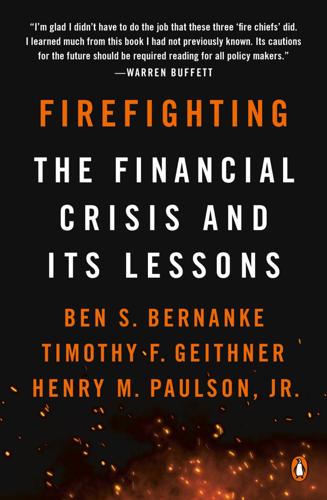
Firefighting
by
Ben S. Bernanke
,
Timothy F. Geithner
and
Henry M. Paulson, Jr.
Published 16 Apr 2019
We hoped it would help to calm market fears and stabilize the situation, without artificially sustaining the financial boom. We didn’t intend to provide any more government support for the financial system than was necessary to protect the overall economy. Capitalism depends on creative destruction. Someone builds a better mousetrap, so incumbent mousetrap makers must adapt or die. Automakers wipe out buggy-whip manufacturers, then the market determines which automakers survive. The same principles normally apply to financial firms. The strong, nimble, and reliable thrive, while the imprudent and mismanaged get devoured.
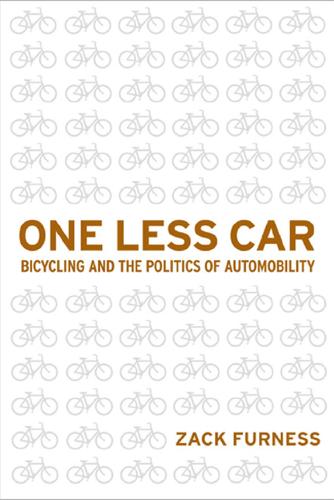
One Less Car: Bicycling and the Politics of Automobility
by
Zack Furness
and
Zachary Mooradian Furness
Published 28 Mar 2010
This is not an appeal to racist nationalism or jingoism as much as it is a matter of common sense and a pragmatic way to envision a broader movement for bicycle transportation that can include, and should rightfully praise, the labor of bicycle factory workers, welders, independent bike builders, tinkerers, artisans, and a multitude of small businesses and communities that stand to gain from an american vélorution. Building a “Better Mousetrap” Industry One of the major problems facing bicycle transportation activists in the twenty-first century is that the totalizing logic of globalization and the realities of free market capitalism frame the prospects of a successful bicycle culture around the importation of bicycles and the enhancement of retail and repair industries, as opposed to encouraging more centralized, more localized, or at the very least, more geographically regionalized modes of production.
…
That is to say, instead of promoting non-motorized transportation through more localized, democratic modes of production and distribution, their prevailing modus operandi uncritically promotes further deregulation and consolidation of the bicycle industry—a scenario that ironically makes cheap oil a prerogative of bicycling advocates inasmuch as the low price of fuel is currently the sole factor enabling bicycle corporations to outsource, subcontract, and otherwise ship bicycles and parts across the globe. Finale as langdon Winner points out in his otherwise problematic critique of the appropriate technology movement, people have always been able to build a better mousetrap in hopes of transforming society, but such technological solutions are fundamentally and perpetually constrained by the larger cultural and political contexts in which they are deployed. Understanding these contexts and daring to ask a more critical set of questions about the relationships between technologies, social change, and everyday life is a crucial task, but by no means the only task, in the broader struggle to create a better world. indeed, the goal is not simply to interpret technologies but to change the ways in which they are used, namely, by creating the cultural and political conditions in which technologies can be put to work in service of equality, social justice, environmental sustainability, and mutual aid.
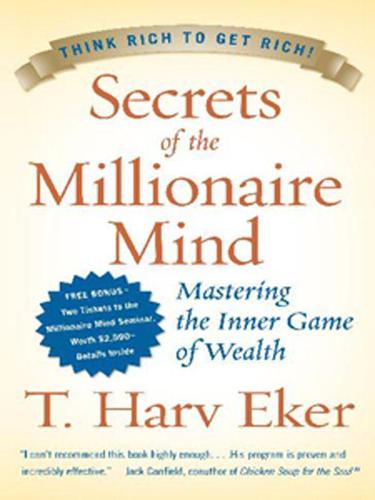
Secrets of the Millionaire Mind
by
T. Harv Eker
Published 15 Feb 2005
They can hope that everyone’s going to scour the land searching for them, but the truth is that the marketplace is crowded with products and services, and even though theirs may be the best, no one will ever know that because they’re too snooty to tell anyone. You’re probably familiar with the saying “Build a better mousetrap and the world will beat a path to your door.” Well, that’s only true if you add five words: “if they know about it.” Rich people are almost always excellent promoters. They can and are willing to promote their products, their services, and their ideas with passion and enthusiasm. What’s more, they’re skilled at packaging their value in a way that’s extremely attractive.
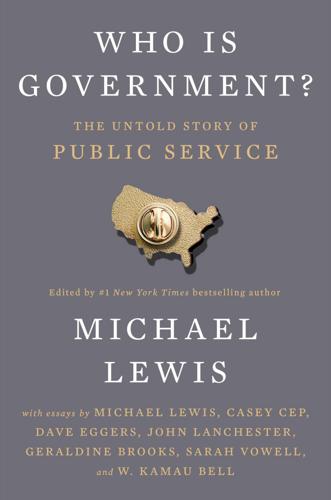
Who Is Government?: The Untold Story of Public Service
by
Michael Lewis
Published 18 Mar 2025
“The antitrust laws are here to preserve and protect competition, which is a really fundamental principle, if you think about it, in the United States. It’s fundamental to the economy here in the U.S. It’s fundamental to the global economy. It’s also really part of the ethos here in the United States. As a country, there’s this idea that America is a meritocracy; that people can come, they can work hard, they can build a better mousetrap and they can succeed; and that consumers can benefit from that hard work, those innovative products, the lower-priced products; and that consumers benefit generally when there’s competition because it drives lower pricing. It drives better quality. It drives innovation.” Apparently you can’t have the American Dream without lawyers—really good lawyers.
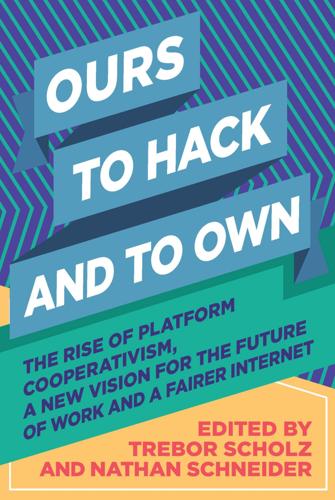
Ours to Hack and to Own: The Rise of Platform Cooperativism, a New Vision for the Future of Work and a Fairer Internet
by
Trebor Scholz
and
Nathan Schneider
Published 14 Aug 2017
And let’s be honest; you wouldn’t want a union that just exists to protect workers’ reputations, just as we don’t organize offline unions only around issues of worker reputation. Those of us who are striving to organize workers in the online economy have to build a theory for reputation portability and protection into our other organizing work. We can’t let reputation management become disaggregated from the platforms on which workers get work. So build a better mousetrap. We should take a lesson from Dave’s union too, and build organizations that can evolve as the technology work evolves. 12. COUNTERANTI-DISINTERMEDIATION DMYTRI KLEINER In Chapter 33 of Capital, Karl Marx introduces us to the character of Mr. Peel, recounted from E. G. Wakefield’s England and America: A Comparison of the Social and Political State of Both Nations.
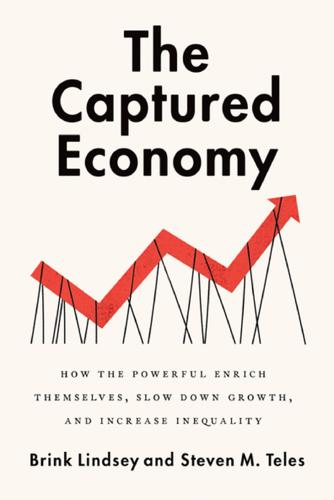
The Captured Economy: How the Powerful Enrich Themselves, Slow Down Growth, and Increase Inequality
by
Brink Lindsey
Published 12 Oct 2017
Regulatory rents do harm not just by suppressing entrepreneurial energy but also by misdirecting it. The economist William Baumol speculates that a key variable influencing innovation and growth is how institutions allocate entrepreneurship between productive and unproductive activities.19 If the policy environment is such that the best way to get rich is building a better mousetrap, entrepreneurial energy will be directed toward innovation; however, if it’s easier to get rich by winning favors through the policymaking process, that energy will be diverted to negative-sum rent-seeking. Accordingly, a rise in rent-creating policies can lead to a drop-off in productive entrepreneurship.
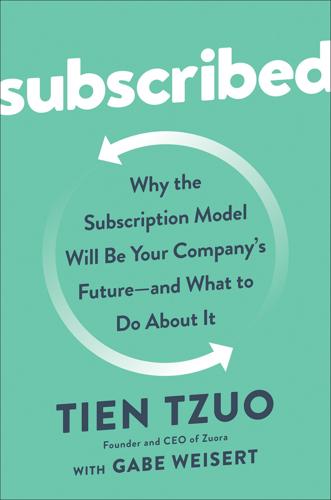
Subscribed: Why the Subscription Model Will Be Your Company's Future - and What to Do About It
by
Tien Tzuo
and
Gabe Weisert
Published 4 Jun 2018
Today they’re working with a major fast-food dining chain to put sensors on every single piece of kitchen equipment in order to create a “responsive” menu that can better handle surge demands. They’re helping farms build networks of insect pheromone detectors that automatically spray dispersants rather than using pesticides, leading to healthier food. They’re even working to build a better mousetrap: an automated trap that monitors activity and effectiveness, certifies that it’s meeting regulations that restaurant chains and grain elevators must abide by, and notifies the manager of any problems. All that innovation probably won’t make much of a difference to the mouse, but it’s still pretty impressive.
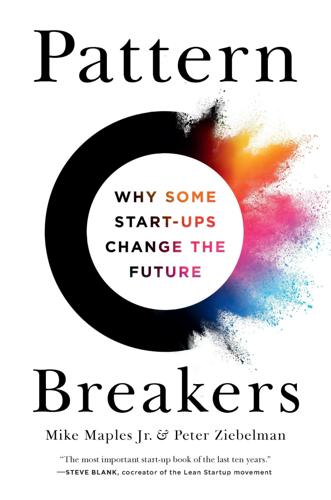
Pattern Breakers: Why Some Start-Ups Change the Future
by
Mike Maples
and
Peter Ziebelman
Published 8 Jul 2024
A stress test allows you to get specific about: the insight the different future it makes possible the inflections that enable it the reason it’s non-consensus the reason it’s right the reason the timing is right INSIGHT TAKEAWAYS Breakthrough start-up ideas need a fundamental insight, which requires you to be non-consensus and right. It’s not enough to build a better mousetrap because lots of other start-ups and incumbents are likely doing so already, and that will cause your upside opportunity to be competed away. The path to greatness is to be both non-consensus and right about an opportunity to change how people will think, feel, and act in the future. Powerful insights leverage the power of inflections.

The Achievement Habit: Stop Wishing, Start Doing, and Take Command of Your Life
by
Bernard Roth
Published 6 Jul 2015
A NOTE ABOUT DESIGN THINKING So what is this design thinking stuff, anyway? Design thinking is a set of general practices a group of us has developed over the years that are effective in solving design challenges. A design challenge can apply to just about any kind of product or experience. It’s not just about how to build a better mousetrap (though that’s part of it); it’s also about things that are not physical objects: how to improve the wait time at a popular amusement park, how to clean up a highway, how to more efficiently get food to needy people, how to improve online dating, and so on. Design thinking is an amorphous concept that was given its name by David Kelley, another Stanford professor and cofounder of IDEO, when he was trying to explain that successful designers have a different mind-set and approach from most people.
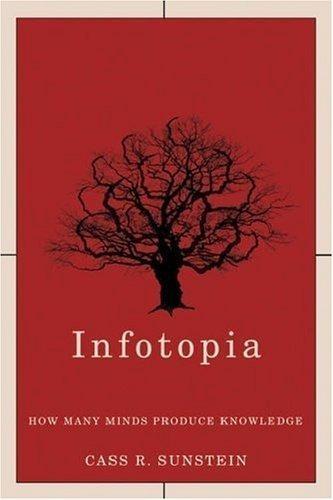
Infotopia: How Many Minds Produce Knowledge
by
Cass R. Sunstein
Published 23 Aug 2006
Suppose that the group contains no experts on the question at issue, but that a fair bit of information is dispersed among group members. If those members consult with one another, the group may turn out to be expert even if its members are not. No individual person may know how to fix a malfunctioning car, to build a better mousetrap, or to repair a broken computer, but the group as a whole may well have the necessary information. Or suppose that the group contains a number of specialists, but that each member is puzzled about how to solve a particular problem, involving, say, the most effective way to respond to a natural disaster or the right approach to marketing a new product.
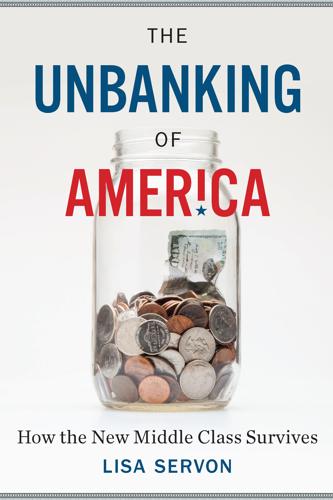
The Unbanking of America: How the New Middle Class Survives
by
Lisa Servon
Published 10 Jan 2017
Over the past few years, a new crop of entrepreneurs with background in engineering, finance, and policy has arrived on the scene. They see the knotty problems that characterize consumer financial services and they are driven to solve them. Like all successful entrepreneurs, they get energized by figuring out how to deal with tough challenges. They think they can build a better mousetrap. And some of them believe they can make the world a better place while providing safe, affordable financial products and services to the growing number of people who need them. Two of the six innovative firms profiled here, Oportún and Fenway Summer, offer new loan products targeted at people who use payday loans.
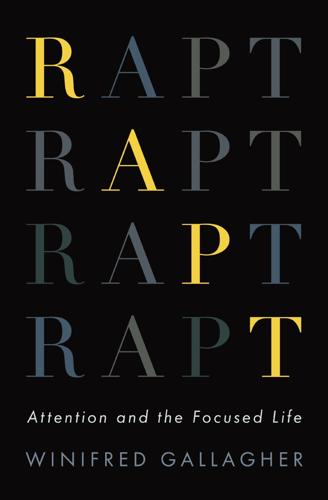
Rapt: Attention and the Focused Life
by
Winifred Gallagher
Published 9 Mar 2009
The American dream is no longer just to get rich quick, but also to enjoy doing it, and new captains of industry offer various best-selling decalogues for achieving this goal. Their tips range from the philosophical (learn from your failures) to the practical (never handle the same piece of paper twice). There’s one insight into both productivity and satisfaction that they inevitably share, however: the importance of laserlike attention to your goal, be it building a better mousetrap or raising cattle. Unless you can concentrate on what you want to do and suppress distractions, it’s hard to accomplish anything, period. Whether she’s herding sheep in the high alpine desert or negotiating a settlement in a law office, Burke is right there, as attentive as a bird dog.
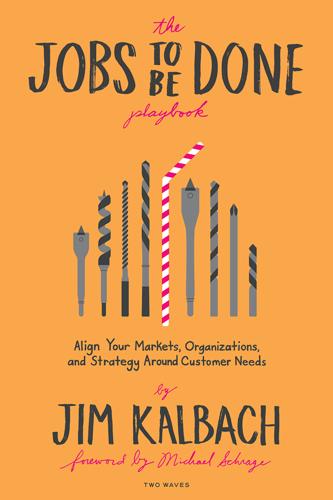
The Jobs to Be Done Playbook: Align Your Markets, Organization, and Strategy Around Customer Needs
by
Jim Kalbach
Published 6 Apr 2020
This article outlines how the Four Forces technique can provide insight into both customer acquisition and retention. The author offers a short, but very helpful video to explain the concept. Rhea is an active thought leader and practitioner of JTBD techniques with a wealth of useful advice on his website. ADOPTION OF INNOVATION Building a better mousetrap does not guarantee that people will adopt an innovation. Many would-be breakthroughs fail for not taking human factors into consideration. You don’t need to look further than the nonadoption of offerings like the Segway, Zune, Amazon’s Fire phone, and even Google Glass. To increase chances of adoption, organizations must understand people’s needs and desires.
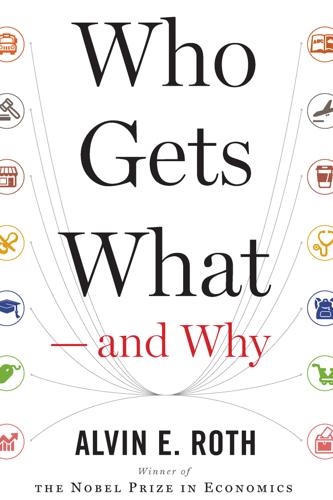
Who Gets What — and Why: The New Economics of Matchmaking and Market Design
by
Alvin E. Roth
Published 1 Jun 2015
But in the absence of sufficient pressure by regulators, a brand-new market design is seldom adopted before a market becomes so dysfunctional that its users grow desperate for something new (or until an entrepreneurial market maker sees a way to compete with existing markets by offering a better design). It’s not clear whether the financial markets have reached that state of dysfunction yet. As the tale of these financial markets makes clear, a superior market design isn’t always implemented. Building a better mousetrap isn’t always rewarded when the mice have a say in the matter. Financial markets are part of an enormous industry. The current winners in the race for speed were simply responding to the extant market design. They wouldn’t be happy if their big investments in faster microwave channels were rendered useless.
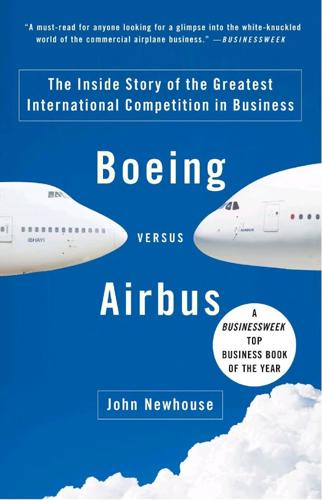
Boeing Versus Airbus: The Inside Story of the Greatest International Competition in Business
by
John Newhouse
Published 16 Jan 2007
Then, Airbus experienced a similarly hard blow when Boeing began selling sizable numbers of 787’s to carriers that had been flying A330’s in the middle market and had been counted on by Airbus to buy its newer version, the A350. In short, Boeing started turning itself around by not just building a better mousetrap but selling it at concessionary prices to airlines of possibly pivotal importance that might instead have bought the other party’s paper airplane. Boeing had altered its strategy, and apparently put behind it at least some of the problems that had been the talk of the industry. Some of the credit goes to Scott Carson, who took charge of the sales force and wasted no time in changing its attitude and lack of edge.
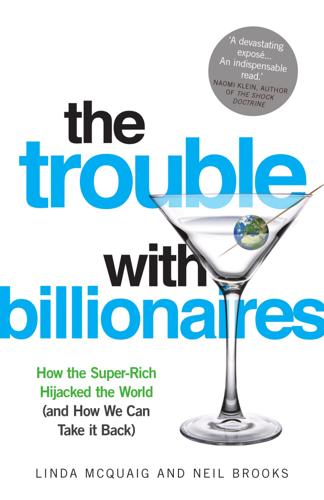
The Trouble With Billionaires
by
Linda McQuaig
Published 1 May 2013
The richest people in advanced countries are not aristocrats but entrepreneurs such as Bill Gates.’ The magazine went on to celebrate today’s super-rich, arguing that ‘to become rich in the first place, they typically have to do something extraordinary. Some inherit money, of course, but most build a better mousetrap, finance someone else’s good idea or at least run a chain of hairdressers in a way that keeps customers coming back. And because they are mostly self-made, today’s rich are restless and dynamic.’ In fact, entrepreneurs make up a very small portion of today’s top earners, estimated at less than 4 per cent.17 Today’s super-rich elite is composed mostly of corporate and financial professionals, who account for some 60 per cent of those in the top-earning 0.1 per cent (with lawyers and real estate developers accounting for another 10 per cent).

Live Work Work Work Die: A Journey Into the Savage Heart of Silicon Valley
by
Corey Pein
Published 23 Apr 2018
Everyone was a critic. Finally, before the last train left for San Francisco, I had the chance to buttonhole a VC in line at the bar. He nodded, glassy-eyed, as I delivered my pitch. Although only in his thirties, the VC, a former engineer, had grown jaded. “It almost doesn’t matter if you build a better mousetrap,” he said. “It’s all this other shit”—like slick branding, good timing, personal connections, and, of course, dumb luck. So much for that plan. I realized I’d come to Cougar Night for all the wrong reasons. * * * Ultimately I resigned myself to embracing the last resort of all fresh-off-the-boat Silicon Valley entrepreneurs: I could pay to pitch my idea to investors.

More Joel on Software
by
Joel Spolsky
Published 25 Jun 2008
twenty-six HITTING THE HIGH NOTES Monday, July 25, 2005 In March, 2000, I launched my site, Joel on Software, with the shaky claim that most people are wrong in thinking you need an idea to make a successful software company (www.joelonsoftware.com/articles/ fog0000000074.html): The common belief is that when you’re building a software company, the goal is to find a neat idea that solves some problem which hasn’t been solved before, implement it, and make a fortune. We’ll call this the build-a-better-mousetrap belief. But the real goal for software companies should be converting capital into software that works. For the last five years, I’ve been testing that theory in the real world. The formula for the company I started with Michael Pryor in September 2000 can be summarized in four steps: It’s a pretty convenient formula, especially since our real goal in starting Fog Creek was to create a software company where we would want to work.
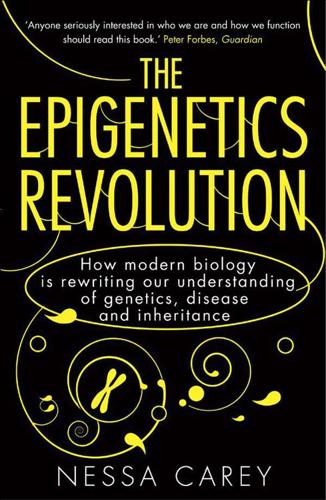
Epigenetics Revolution: How Modern Biology Is Rewriting Our Understanding of Genetics, Disease and Inheritance
by
Nessa Carey
Published 31 Aug 2011
There are major efforts being made to learn how to understand this code, with multiple labs throughout the world collaborating or competing in the use of the fastest and most complex technologies to address this problem. The reason for this is that although we may not be able to read the code properly yet, we know enough about it to understand that it’s extremely important. Build a better mousetrap Some of the key evidence comes from developmental biology, the field from which so many great epigenetic investigators have emerged. As we have already described, the single-celled zygote divides, and very quickly daughter cells start to take on discrete functions. The first noticeable event is that the cells of the early embryo split into the inner cell mass (ICM) and the trophoectoderm.
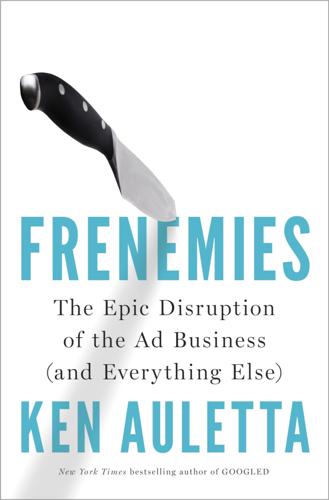
Frenemies: The Epic Disruption of the Ad Business
by
Ken Auletta
Published 4 Jun 2018
Only some form of communication can close the distance between “those who want and those who have.” He thinks most of the gap is filled by advertising. “Edison didn’t actually say, ‘Who makes the best mousetrap, the world will beat a path to his door.’ If he had said it, it would have been absurd. If you build a better mousetrap and you’re in the woods, until somebody knows you’ve got the better mousetrap, there’s no point in building it.” He cites the former Soviet Union and its satellites: “Look at Communist countries. No advertising. None of the consumer goods companies thought it necessary or worthwhile to innovate because if you do something that’s quite interesting but you can’t tell anyone about it, and your competition are not doing it, why bother?”

Digital Wars: Apple, Google, Microsoft and the Battle for the Internet
by
Charles Arthur
Published 3 Mar 2012
Among the many papers on the schedule for the conference, though largely unnoticed, was one by two Stanford undergraduates, entitled ‘The anatomy of a large-scale hypertextual web search engine’. Larry Page and Sergey Brin, then 25 and 24, were setting out their idea of a better search engine; given the rapidly growing number of pages and users on the world wide web (devised only six years earlier), it was the modern equivalent of building a better mousetrap. The idea was that the world would beat a path to their door – or click its way to their web page. They weren’t the first who had had the idea of how to index the web, nor the first to have thought about indexing it in the way that they did. But they were to do it by far the best. They created a system for searching the content of the net – hardly a new idea, since Yahoo and dozens of other companies were already doing exactly the same.
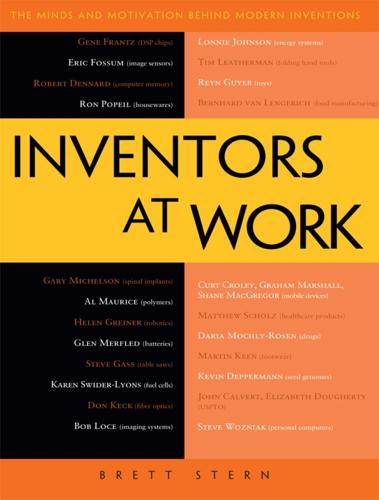
Inventors at Work: The Minds and Motivation Behind Modern Inventions
by
Brett Stern
Published 14 Oct 2012
Today, at the dawn of the nexus of the future, ideas for inventions stand only a small chance of being realized and competing in the marketplace unless they’re generated or picked up by corporations that can marshal teams of scientists and lawyers underwritten by enterprise-scale capital and infrastructure. Nonetheless, millions of individuals still cherish the dream of inventing and building a better mousetrap, bringing it to market, and being richly rewarded for those efforts. Americans love their pantheon of garage inventors. Thomas Edison, the Wright Brothers, Alexander Graham Bell, Bill Hewlett and Dave Packard, and Steve Wozniak and Steve Jobs are held up as culture heroes, celebrated for their entrepreneurial spirit no less than their inventive genius.

Computer: A History of the Information Machine
by
Martin Campbell-Kelly
and
Nathan Ensmenger
Published 29 Jul 2013
In 1962 Sperry Rand brought in an aggressive new manager from ITT, Louis T. Rader, who helped UNIVAC address its deficiencies. But despite making a technologically successful entry into computer systems for airline reservations, Rader was soon forced to admit: “It doesn’t do much good to build a better mousetrap if the other guy selling mousetraps has five times as many salesmen.” In 1963 UNIVAC turned the corner and started to break even at last. Yet the machine that brought profits, the UNIVAC 1004, was not a computer at all but a transistorized accounting machine, targeted at its existing punched-card machine users.
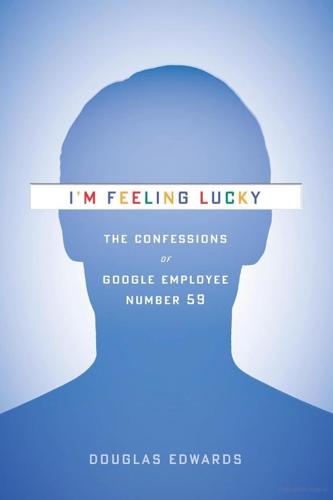
I'm Feeling Lucky: The Confessions of Google Employee Number 59
by
Douglas Edwards
Published 11 Jul 2011
Those qualities cut both ways. "Larry and Sergey were always skeptical about traditional marketing," Cindy recalls. "They wanted Google to stand apart from others by not doing what everyone else was doing ... Let the other guys with inferior products blow their budgets on noise-making, while we stayed focused on building a better mousetrap." That skepticism translated into constant questioning about everything marketing proposed. The department only existed because someone (a board member or a friend from Stanford) had insisted the founders needed people to do all the stuff that wasn't engineering. Cindy pushed back against the constant pressure to prove her department was not a waste of payroll, but she also let us know that expectations were high.
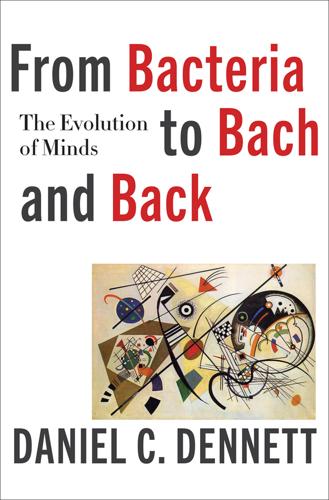
From Bacteria to Bach and Back: The Evolution of Minds
by
Daniel C. Dennett
Published 7 Feb 2017
This clarifies the physical environment in which all R&D must take place, but the R&D itself, the development of pattern-detection “devices” that can refine the ore, find the needles, is a process that we are only now beginning to understand in a bottom-up way. Up until now we have been able to reason about the semantic-level information needed for various purposes (to inform rational choices, to steer, to build a better mousetrap, to control an elevator) independently of considerations of how this semantic information was physically embodied. As Norbert Wiener, the father of cybernetics, once put it (1961, p. 132): “Information is information, not matter or energy. No materialism that does not admit this can survive at the present day.” 23Colgate and Ziock (2010) provide a brief, useful summary of some of the history of definitions of information growing out of the work of Shannon and Weaver. 24Giulio Tononi (2008) has proposed a mathematical theory of consciousness as “integrated information” that utilizes Shannon information theory in a novel way and has a very limited role for aboutness: it measures the amount of Shannon information a system or mechanism has about its own previous state—that is, the states of all its parts.
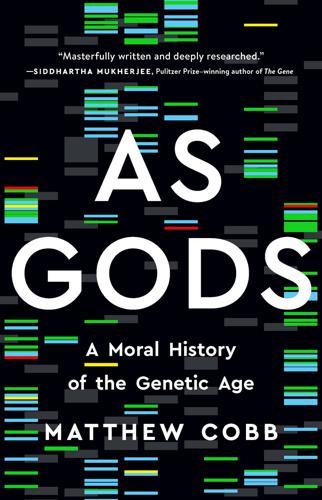
As Gods: A Moral History of the Genetic Age
by
Matthew Cobb
Published 15 Nov 2022
A key part of the mythology of the American Dream was – and still is – that if the little guy (or gal) comes up with a brilliant idea, they can acquire great wealth through the operation of the market, as long as the invention is protected by patent law. As the nineteenth-century American writer Ralph Waldo Emerson is supposed to have said: ‘Build a better mousetrap, and the world will beat a path to your door.’i American universities were certainly not little guys, but what became known as the Bayh–Dole Act encouraged them to focus their attention on the possibilities of getting rich quick through patents and involvement with business, in particular through the application of genetic engineering.
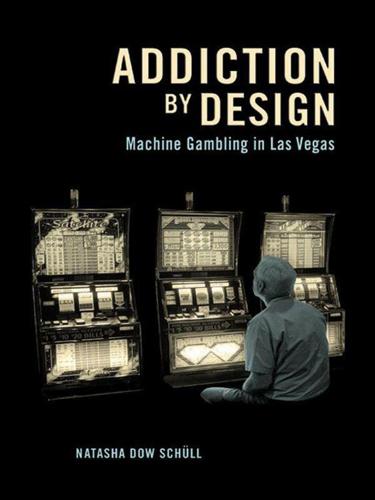
Addiction by Design: Machine Gambling in Las Vegas
by
Natasha Dow Schüll
Published 15 Jan 2012
Following this “small (r)evolutionary accomplishment,” he recalls, designers across the industry were more likely to “get a curve into a machine” as a way to accommodate the natural curves of human bodies.44 The industry’s increasing amenability to curves was evident during a G2E 2005 panel titled “Building a Better Mousetrap: The Science of Ergonomics,” when a representative from Atronic Gaming described the development of her company’s “emotion” machine. A review of focus group data from around the world had revealed that players were complaining of arm pain from reaching to play without support, and that machines’ sharp corners and hard metal were uncomfortable to lean into.
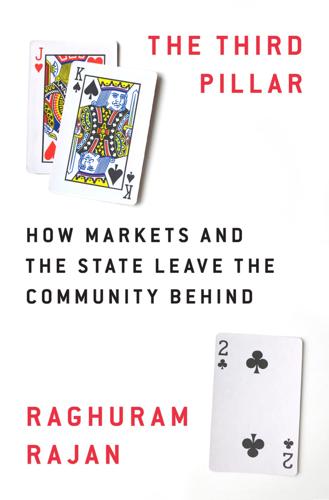
The Third Pillar: How Markets and the State Leave the Community Behind
by
Raghuram Rajan
Published 26 Feb 2019
While, by and large, this has moved corporations toward greater efficiency and away from vague notions of doing social good, it has also undermined their public support by legitimizing actions the community believes are grossly unfair. Corporations have compounded their political vulnerability by attempting to enhance profits, not just by building a better mousetrap, but by influencing rules and regulations in their favor. As a result, not only is the private sector more dependent today on state benevolence to sustain such anti-competitive barriers, which make it a less effective counter to state power, it is also less likely to enjoy broad public support if the state moves against it because it is seen as part of the crony swamp.
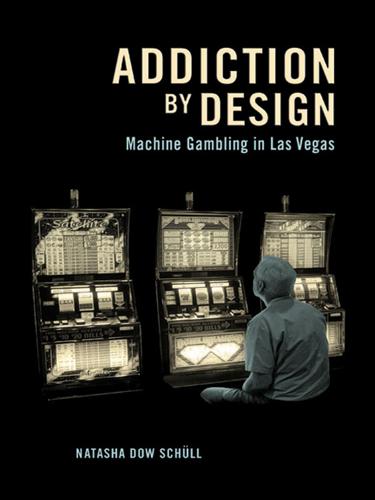
Addiction by Design: Machine Gambling in Las Vegas
by
Natasha Dow Schüll
Published 19 Aug 2012
Following this “small (r)evolutionary accomplishment,” he recalls, designers across the industry were more likely to “get a curve into a machine” as a way to accommodate the natural curves of human bodies.44 The industry’s increasing amenability to curves was evident during a G2E 2005 panel titled “Building a Better Mousetrap: The Science of Ergonomics,” when a representative from Atronic Gaming described the development of her company’s “e-motion” machine. A review of focus group data from around the world had revealed that players were complaining of arm pain from reaching to play without support, and that machines’ sharp corners and hard metal were uncomfortable to lean into.

The Art of SEO
by
Eric Enge
,
Stephan Spencer
,
Jessie Stricchiola
and
Rand Fishkin
Published 7 Mar 2012
Results indicating that users may have a strong emotional preference for Google Fundamentally, testers find (again and again) that the brand preference for Google outweighs the logical consideration of the quality of the search results. Search engines that plan to take market share from Google are going to have to think differently. If Microsoft or a start-up search engine wants to capture market share, it’s going to have to think less like a technology company trying to build a better mousetrap and more like a brand trying to win mindshare from a beloved competitor. How did Pepsi take share away from Coke? Or Toyota from Ford? That is beyond the scope of this book, but it is a process that can take more than a great idea or great technology. It requires a massive psychological shift in the way people around the world perceive the Google brand in relation to its competition.

Rationality: From AI to Zombies
by
Eliezer Yudkowsky
Published 11 Mar 2015
And the cosmopolitan heroes who understand that minds don’t have to be just like us to be embraced as valuable— I read those books. I once believed them. But the beauty that jumps out of one box is not jumping out of all boxes. If you leave behind all order, what is left is not the perfect answer; what is left is perfect noise. Sometimes you have to abandon an old design rule to build a better mousetrap, but that’s not the same as giving up all design rules and collecting wood shavings into a heap, with every pattern of wood as good as any other. The old rule is always abandoned at the behest of some higher rule, some higher criterion of value that governs. If you loose the grip of human morals and metamorals—the result is not mysterious and alien and beautiful by the standards of human value.
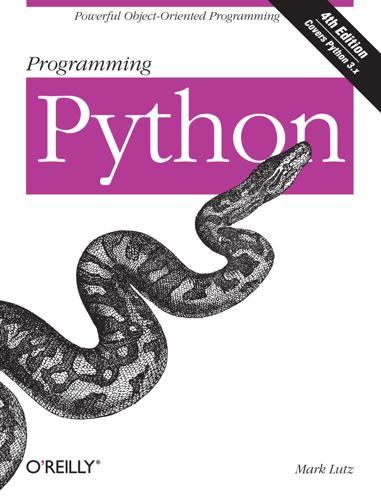
Programming Python
by
Mark Lutz
Published 5 Jan 2011
Consult Tk and tkinter resources for options not listed explicitly here. Although other tkinter tools are analogous to those presented here, the space I have for illustrating additional widgets and options in this book is limited by both my publisher and the finite nature of trees. Chapter 10. GUI Coding Techniques “Building a Better Mousetrap” This chapter continues our look at building GUIs with Python and the tkinter library by presenting a collection of more advanced GUI programming patterns and techniques. In the preceding three chapters, we explored all the fundamentals of tkinter itself. Here, our goal is to put them to work to add higher-level structures that will be useful in larger programs.